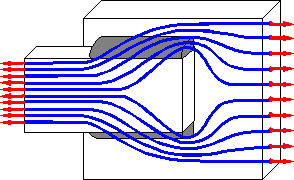 Passing through welds, inner forces meet obstacles on their path. They concentrate at the ends of weld. The force lines bend smoothly as they pass through the welds, lines cannot bend sharply.
Passing through welds, inner forces meet obstacles on their path. They concentrate at the ends of weld. The force lines bend smoothly as they pass through the welds, lines cannot bend sharply.
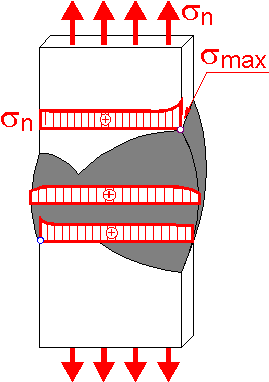 The figure shows a stress profile in the butt-weld. There is stress concentration in corners. Stress in the wider central section of weld doesn't exceed the nominal value.
The figure shows a stress profile in the butt-weld. There is stress concentration in corners. Stress in the wider central section of weld doesn't exceed the nominal value.
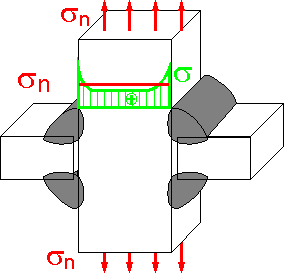 This stress pattern is typical for a welded joint. Sum of the area (force) under the curve must be equal to the sum of the area under the line corresponding to nominal value.
This stress pattern is typical for a welded joint. Sum of the area (force) under the curve must be equal to the sum of the area under the line corresponding to nominal value.
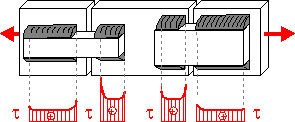 Nominal shear stress is twice as large as the shorter welds. Stress concentration is higher if rigidities of connected parts are different. Stress is higher in the beginning of the short weld.
Nominal shear stress is twice as large as the shorter welds. Stress concentration is higher if rigidities of connected parts are different. Stress is higher in the beginning of the short weld.
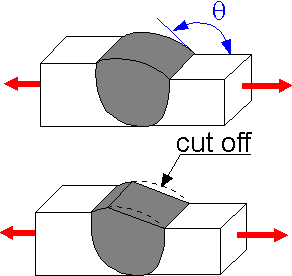 Stress concentration depends on the surface shape, not inside geometry of the weld. The larger the angle q, the smaller the stress concentration factor. In order to fulfill these requirements, a special cutting operation is made. Fatigue strength of a machined joint is higher than the first one.
Stress concentration depends on the surface shape, not inside geometry of the weld. The larger the angle q, the smaller the stress concentration factor. In order to fulfill these requirements, a special cutting operation is made. Fatigue strength of a machined joint is higher than the first one.
 A large fraction of inner force goes through the end nugget in the row. The numbers indicate approximate values of the parameter.
A large fraction of inner force goes through the end nugget in the row. The numbers indicate approximate values of the parameter.
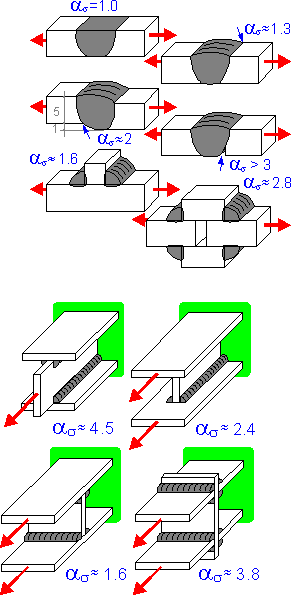 Stress concentration can be evaluated by stress concentration factor as which is equal to the ratio of maximum and nominal stresses.
Stress concentration can be evaluated by stress concentration factor as which is equal to the ratio of maximum and nominal stresses.
 2015-08-13
2015-08-13 293
293








